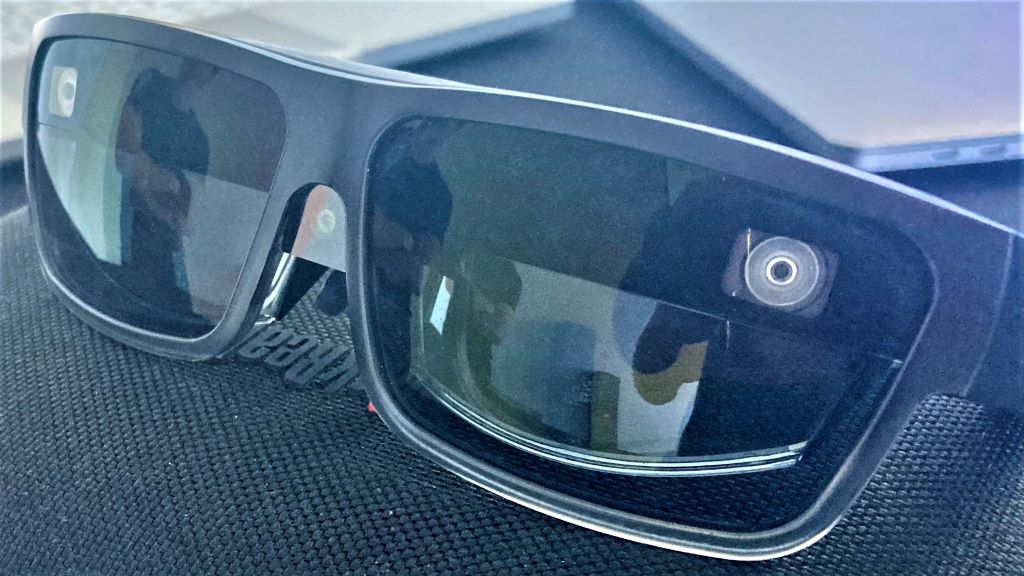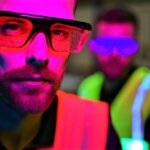Business travel trends: XR tools dial up speedy boarding to 11

|
Getting your Trinity Audio player ready...
|
Zoom meetings and Teams calls have their downsides, but they are a quick way of connecting with colleagues and clients no matter where attendees are based. Business travel, on the other hand, can feel mighty slow in comparison. However, it does come with benefits when it comes to striking deals, developing products, and much more besides. But what if technology could offer a speedy boarding pass to the best of both worlds?
On paper, business journeys should be quicker. But flights get delayed, and busier airports mean longer queues – something this author can attest to, having recently traveled from the UK to Austria and back. But that’s not to say that the business trip wasn’t worthwhile. Quite the opposite, as visiting Qualcomm’s XR labs in Vienna set the scene beautifully for how spatial computing opens the door to a much faster version of business travel, in the digital domain.
Speedy boarding in the digital domain
On TechHQ we’ve written about how XR has crossed the performance threshold, with self-contained devices serving as a platform for a variety of compelling enterprise VR applications. And speaking with experts in Vienna, including OEMs building products based on Qualcomm’s suite of spatial computing chips, it’s clear that interest in XR is on the rise.
More than 5,000 developers have signed up to Snapdragon Spaces – a cross-platform ecosystem that accelerates the process of creating apps for wearable XR devices. And the easier it is to integrate the basics of spatial computing, the more effort that can be focused on getting the user experience right.
The speedy boarding and fast travel appeal of wearing an XR headset and meeting in a digitally rendered conference room – rather than journeying to its real world equivalent – will only catch on if navigating that virtual space is as instinctive as being there in person.
“For the market to work, you need to provide customers with meaningful applications,” Jerome Jacqmin – one of Qualcomm’s senior product specialists – told the audience at the Vienna-based XR technology briefing.
Executives already know how to work the room and make the right impression with new business partners, and if those skills don’t transfer to the virtual world when trying out XR applications for the first time, they won’t come back.
Touchscreens have played a big role in driving the appeal of smartphones and tablets, as navigating the UI is as simple as pushing digitally rendered buttons. And developments in hand-tracking translate users’ muscle memory into a 3D spatial computing environment. “The world that surrounds you becomes your desktop,” Jacqmin points out.

Holo-Light streaming XR solution running on mixed reality glasses. Front-facing cameras can be used to perform hand-tracking, which means that users can manipulate the virtual world without the need for physical controllers, reducing cost.
Qualcomm has incorporated an AI engine into its silicon, including chips for XR applications, and this helps with tasks such as image recognition for locating a user’s arms, hands, and fingers based on external camera inputs.
Being able to reliably map hand movements and render them in VR means that headset wearers can interact with digital scenes as they would in the real world – for example, being able to pick up and move objects and point to things of interest. Plus, the local anchors and persistence tool – also included as part of Snapdragon Spaces – keeps track of where items end up so they hold their positions between sessions.
Last week we were in London for a VR demo @the_gemba_ See 👉 https://t.co/t1cMlOpWgD And today's tech trip is all about extended reality (XR) with demo's and OEM chats @Qualcomm_EU labs in Vienna ✈️ pic.twitter.com/TSHDtA9qtl
— TechHQ (@techhq) September 20, 2023
Another benefit of having access to accurate hand-tracking data is that spatial computing systems can be built without controllers – lowering cost, development, and production overheads, and reducing the amount of materials required.
Speedy boarding is a good analogy for how streamlined business meetings can become, enabled by spatial computing. And there are some great examples of OEMs not just having live products in the market, but benefiting from them in-house. “We were set up as a remote company from the beginning,” Nik Treiber – Co-founder and head of product at Arthur Technologies – told the audience of tech writers invited to Qualcomm’s XR Labs event in Vienna. “And we use Arthur for our team meetings.”
The firm’s software, together with an XR headset, offers fully digital office space for enterprise collaboration. With the company having grown in size, more than 60 of the firm’s employees based around the world regularly drop into virtual conference rooms and meeting spaces to interact, much like staff would in the real world.
Front-facing cameras on the outside of the head-worn device enable pass-through video, which adds to the realism. In a demonstration, Treiber explained to TechHQ how the software lets users place actual physical items, such as their desk, in the 3D world – for example, so that they could drink an actual cup of coffee while catching up with colleagues.
The latest version of the digital office space enables users to create professional-looking avatars with incredibly lifelike faces. Depending on the hardware being used, avatars can even raise their eyebrows to match the expression, dynamically, of their real-life creators. And this realism adds to the feeling of being in the room with colleagues, and benefits communication.
Presentation areas for showing slide decks and interactive whiteboards can be easily reproduced in the virtual world. And use-cases include learning and development, team activities, running agile projects, employee onboarding, and recruitment – to give just a few examples.
Industrial apps: mixed reality design review
Business travel can also include design reviews, where experts across a company meet to consider the latest iteration of a future product. But again, sticking with our analogy, there’s a speedy boarding option. Holo-Light – which has offices in Germany, Austria, and the US – is developing XR streaming solutions for the industrial metaverse.
Having the heavy lifting take place in the cloud means that clients can use spatial computing to visualize and interact with real-size 3D CAD models like never before. Models can be rendered in rich detail, containing around 20 million polygons, compared with just half a million or so that would be possible to access locally.
Both a VR and augmented reality (AR) solution, models can be compared against real-life surroundings to make sure that everything fits as expected. Also, Holo-Light’s platform is ideal for checking that the finished version can be maneuvered through the factory – for example, in the case of large industrial equipment – to avoid any surprises during installation.
Customers include BMW, which now uses XR solutions routinely to connect teams based at different sites without staff having to travel physically to participate. And having files streamed centrally means that everyone is working to the current version.
Comparing business travel with opportunities for spatial computing works well in highlighting how XR solutions could deliver big efficiency gains for firms. But it does give the wrong impression on one count. In real life, speedy boarding adds to the cost of your ticket. But in the virtual world that fast travel is included as part of the experience.
Disclosure: the invitation to visit Qualcomm’s XR Labs event in Vienna included travel (Economy) and overnight accommodation.









